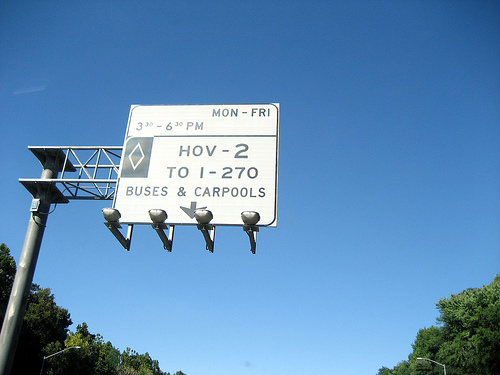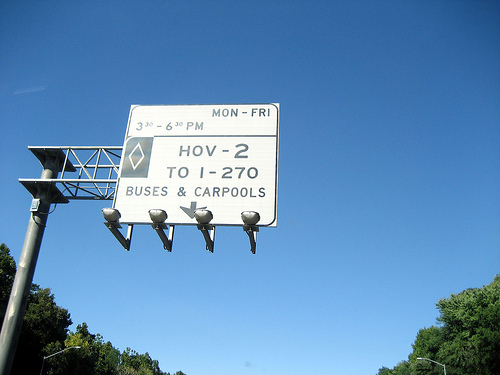 Photo: BankbryanFor the last 30-plus years, commuters in the D.C. area have been commuting to and from work via modified hitchhiking. Commuters wait in “slug lines” for a driver who’s going their way — it’s a little like catching a SuperShuttle at the airport. These spontaneous carpools are beneficial for the drivers, who get to use speedy HOV lanes; for passengers, who get a free ride to work; and for the environment, because it means fewer cars on the road.
Photo: BankbryanFor the last 30-plus years, commuters in the D.C. area have been commuting to and from work via modified hitchhiking. Commuters wait in “slug lines” for a driver who’s going their way — it’s a little like catching a SuperShuttle at the airport. These spontaneous carpools are beneficial for the drivers, who get to use speedy HOV lanes; for passengers, who get a free ride to work; and for the environment, because it means fewer cars on the road.
The popularity of slug lines shows that people are willing to sit with strangers, put up with someone else’s schedule, and even stand around waiting for a pickup — if it means a quicker ride. In some places, that’s what you get with public transit. In D.C., well … not always. Maybe transit officials should be taking notes: People are cool with the supposed down sides of sharing a ride, as long as it actually gets them where they want to go on time.
Read more:
“Slugging — The People’s Transit,” Miller McCune


